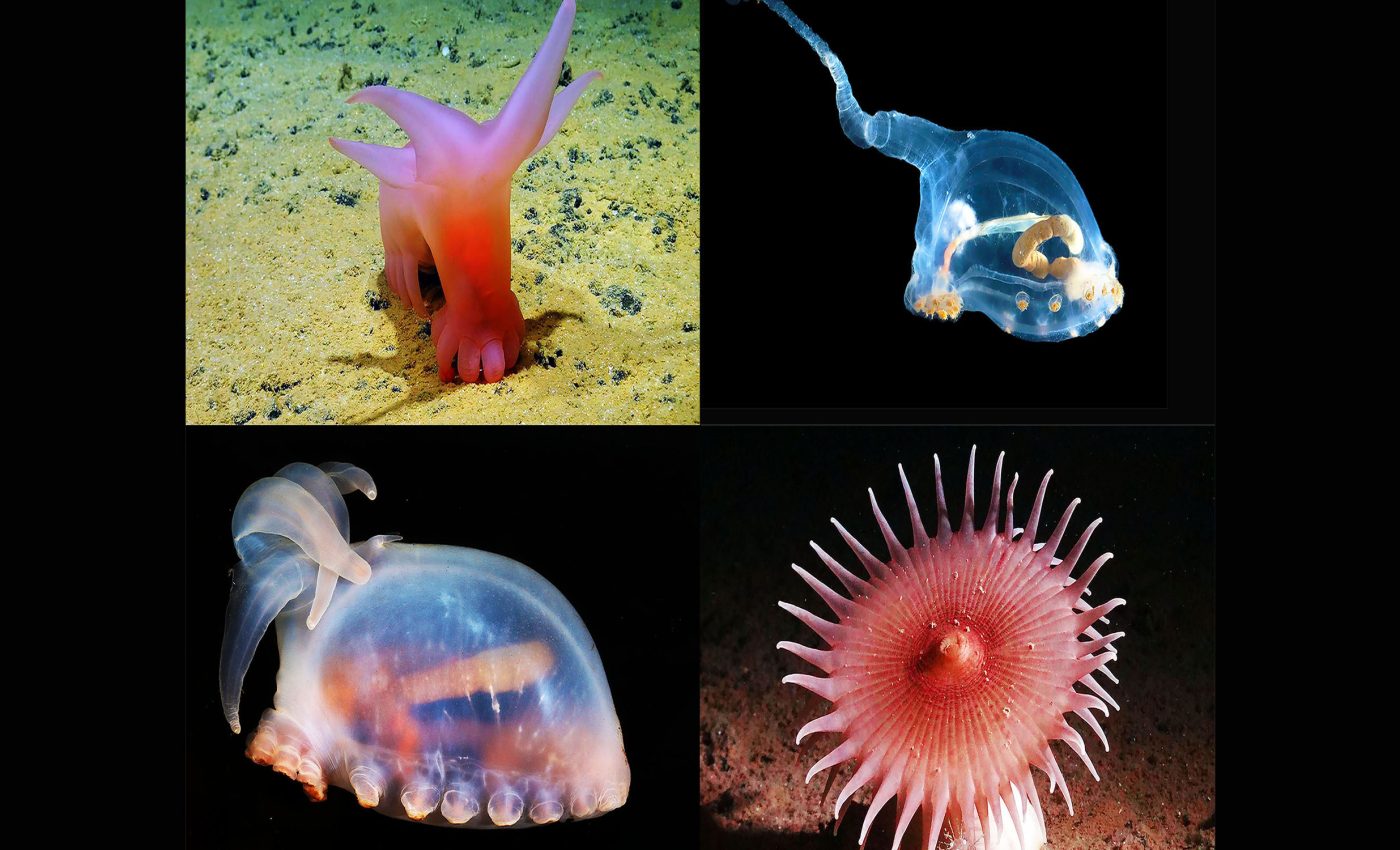
Sea pigs, unicumbers, and other stunning new sea creatures discovered
The depths of the ocean, a realm of perpetual darkness and crushing pressure, are often likened to the final frontier of exploration on Earth. While we may not encounter aliens or hidden planets down there, scientists continue to uncover a treasure trove of bizarre and beautiful sea creatures in the Abyssal Plain that challenge our understanding of life.
A recent expedition to the Clarion Clipperton Zone (CCZ), a deep sea region between Mexico and Hawaii in the eastern Pacific Ocean, has revealed a host of such creatures. Each one is a testament to the resilience and adaptability of life in the most extreme environments.
Unexplored depths of the ocean
Imagine venturing into a world where sunlight never reaches, where the pressure could crush a submarine like a tin can, and where the landscape is as alien as anything we might find on another planet. This is the Abyssal Plain, a vast expanse of seafloor lying thousands of meters below the waves.
Despite its size and importance, we know surprisingly little about this underwater wilderness.
“These areas are the Earth’s least explored. It’s estimated that only one out of 10 animal species living down here has been described by science,” said Thomas Dahlgren, a marine ecologist who recently returned from a 45-day expedition to the CCZ.
Dahlgren and his colleagues onboard the British research vessel James Cook were on a mission to document the biodiversity of this region before it is potentially opened up to deep-sea mining.
How deep sea creatures survive
Life in the abyss is slow, sparse, and strange. With little food available, creatures here have evolved to survive on a meager diet of “marine snow,” the organic debris that drifts down from the surface.
Filter feeders like sponges and sediment feeders like sea cucumbers are the dominant life forms, eking out a living from the scraps of the sunlit world above.
“The lack of food causes individuals to live far apart, but the species richness in the area is surprisingly high. We see many exciting specialized adaptations among the animals in these areas,” noted Dahlgren.
These adaptations include transparent bodies, bioluminescence, and the ability to survive on the tiniest scraps of food.
Gallery of odd abyssal creatures
The expedition’s remotely operated vehicle (ROV) captured stunning images of some of the unique ocean creatures.
One of the most intriguing was a cup-shaped glass sponge, a creature believed to be one of the longest-lived on Earth, with some individuals estimated to be over 15,000 years old.
These sponges are not only ancient but also incredibly fragile, their bodies made of intricate silica structures that resemble spun glass.
Another highlight of the expedition was the discovery of a pink sea pig, a type of sea cucumber that ambles across the seafloor on its tube feet, hoovering up nutrient-rich sediments.
“These sea cucumbers were some of the largest animals found on this expedition. They act as ocean floor vacuum cleaners, and specialize in finding sediment that has passed through the least number of stomachs,” said Dahlgren.
Perhaps the most whimsical discovery was a transparent sea cucumber nicknamed the “unicumber.” This bizarre creature, with its visible internal organs and a long, trailing appendage, resembles something out of a science fiction novel.
“We can only guess what the long tail is used for, but probably to be able to swim,” said Dahlgren.
Future of the Abyssal Plains and its creatures
The expedition’s findings are not just a fascinating glimpse into a hidden world. They also have important implications for the future of the Abyssal Plains.
The CCZ is rich in mineral nodules containing valuable metals used in green technologies, such as solar panels and electric car batteries. As demand for these metals grows, so does the pressure to mine the seafloor.
“We need to know more about this environment to be able to protect the species living here,” said Dahlgren. “Today, 30% of these marine areas in consideration are protected, and we need to know whether this is enough to ensure that these species aren’t at risk of extinction.”
The race is on to understand the Abyssal Plains before mining begins. Dahlgren and his colleagues are working to catalog the species found in the CCZ and to understand how they interact with each other and their environment.
This knowledge will be crucial in determining the potential impacts of mining and in developing strategies to protect this unique ecosystem.
The Abyssal Plains may be a world apart, but the creatures that inhabit them are a reminder of the interconnectedness of life on Earth.
What happens in the depths of the ocean can have ripple effects that reach far beyond the abyss. By understanding and protecting this hidden world, we are not only safeguarding its unique biodiversity but also ensuring a healthier planet for all.
—–
Like what you read? Subscribe to our newsletter for engaging articles, exclusive content, and the latest updates.
Check us out on EarthSnap, a free app brought to you by Eric Ralls and Earth.com.
—–

















